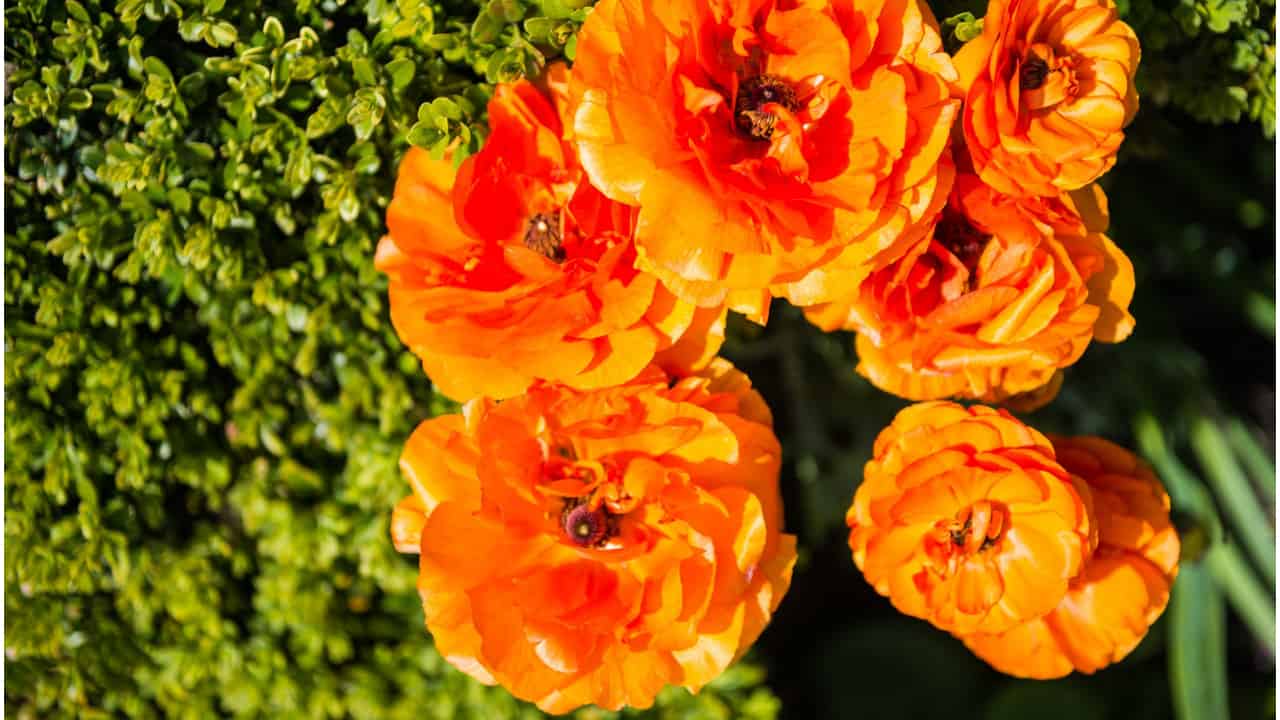· gardening tips · 4 min read
How To Take Care of Ranunculus
Learn how to take care of ranunculus. Information on how to grow, plant and care for ranunculus flowers.

What is Ranunculus?
Ranunculus is a genus of about 3,000 species of plants in the family Ranunculaceae, native to temperate and cold regions of the Northern Hemisphere. The name Ranunculus is derived from the Latin rana (frog), because the flower petals are said to look like frog’s legs. They are herbaceous perennial plants, but some species are annual plants.
The leaves are usually deeply divided, but sometimes simple or even pinnate. The flowers have five sepals and typically between five and 25 petals. The petals are usually brightly colored and often fringed. The fruits are small achenes with one to six seeds.
Sun Requirements: How Much Sun Do Ranunculus Need?
Ranunculus are a popular spring flower that can be grown either outdoors in the garden or indoors in a pot. They need plenty of sun to grow and bloom, but too much sun can actually damage the flowers. In order to get the most out of your ranunculus plants, make sure to place them in an area where they will get plenty of sun but won’t be over-exposed to the heat.
Soil Requirements: What Type of Soil Do Ranunculus Need?
Soil pH is an important consideration when planting Ranunculus. Most varieties prefer a soil pH of 6.0 to 7.5. If the soil is too acidic or alkaline, the plants will not thrive. In addition, Ranunculus need well-drained soil that is rich in organic matter. A soil test can help you determine if your soil has the proper pH and nutrient levels for these plants. If it doesn’t, you can amend the soil with compost or other organic matter to help improve drainage and fertility.
Water Requirements: How Much and How Often Water Do Ranunculus Need?
Water is an essential part of plant growth, but it can be difficult to determine how much water a specific plant needs. This is especially true for plants that are new to your garden, like ranunculus. In order to get your ranunculus off to a healthy start, it’s important to water them regularly and give them the right amount of water.
Ranunculus needs 1-2 inches of water per week. You can either water them manually or use a drip system or irrigation line. If you’re using manual watering methods, make sure the soil is moist but not wet before you water the plants. Watering too often can lead to root rot, while not watering often enough will cause the plants to wilt.
Once your ranunculus are established, they should be able to survive on less water.
Do Ranunculus come Back Every Year ? - For the answer check the article to find all that you need.
Fertilizer: When and How to Fertilize Ranunculus
When to fertilize ranunculus can depend on the climate where you live. In general, though, it is best to fertilize them in the early spring before they start blooming and then again after they have finished blooming. How much fertilizer to use will also depend on the type of fertilizer that you are using. A dilute solution of liquid organic fertilizer or fish emulsion can be used. Apply it around the base of the plant and water it in well.
Pests and Diseases: Common Problems with Ranunculus and Their Solutions
One of the most common problems with ranunculus is that they often don’t last long. This is usually because they are not watered enough or they are exposed to too much sunlight. If you’re having trouble getting your ranunculus to last, make sure to water them regularly and place them in a spot where they will get indirect sunlight.
Another common problem with ranunculus is that they can be susceptible to pests and diseases. If you notice that your plants are being attacked by pests or diseases, take action immediately to get rid of them. Pests can often be eliminated by using insecticidal soap, and diseases can be treated with fungicide.
Finally, one of the biggest problems with ranunculus is that it can be difficult to grow from seed.